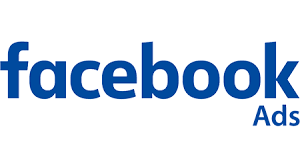Currently Empty: ₹0.00
Google Ads vs. Facebook Ads: Which is Better for Your Business?
Google Ads vs. Facebook Ads,
Problem
As a business owner, you know how vital it is to get your product or service in front of the right audience. You want results—a steady flow of customers who are genuinely interested in what you offer. Advertising is a powerful tool that can deliver just that. But with so many platforms available, which one should you choose? Two giants stand out in the world of digital advertising: Google Ads and Facebook Ads. Picking the right platform is not just a decision; it’s a strategy that could make or break your campaigns.
Agitate
The decision is not simple. On the one hand, Google Ads gives users access to the enormous search engine, which handles more than 8.5 billion queries every day. People actively look for answers to their issues in this digital marketplace, frequently with the intention of making a purchase. Conversely, Facebook Ads gives marketers access to billions of active people who browse through their feeds, interact with information, and find new goods based on their interests. Google Ads vs. Facebook Ads
Selecting the incorrect platform, or worse, utilizing both inefficiently, can waste time, deplete your advertising budget, and leave you disappointed by the poor results. Even while a poorly optimized Google ad generates clicks, it may not result in sales. Similar to this, Facebook ads may promote interaction but fail to increase sales. The first step to choosing wisely is to comprehend these platforms and how they differ from one another.
The answer
Using information and analysis from actual case studies, let’s compare Google Ads versus Facebook Ads so you can choose which platform best suits your company’s objectives.
Google Ads:

How It Works
Google advertising’s pay-per-click (PPC) business model. The main benefit? purpose. When someone searches for “plumber near me” or “best laptops under $1000,” they are actively seeking answers. Your advertisement might be the solution they require.
Benefits:
High-Intent Audience People are actively looking for what they need on Google. This indicates that you are aiming to reach a market that is already considering your offering.
Extensive Reach via the Display Network You may target consumers outside of the search engine by using Google’s Display Network, which spans millions of websites, applications, and videos.
Measurable Return on Investment You can monitor conversions down to the click using tools like Google Analytics, making sure your investment is being used effectively.
Limitations
- Budgets can be swiftly depleted by competitive and costly keywords, particularly for sectors like real estate and insurance.
- Proficiency in keyword research, ad copywriting, and bidding tactics is frequently necessary for success.
John’s Plumbing Services Case Study
John’s Plumbing targeted the terms “emergency plumber” and “plumbing repair near me” with Google Ads. The campaign increased calls by 30% in just three months, and 70% of those calls resulted in service bookings. High-intent keywords and landing page optimization were given top priority by John’s company in order to efficiently collect leads.
Facebook Ads: How They Work When You’re Reaching Out to People

Businesses may make eye-catching advertisements using Facebook Ads that show up in users’ newsfeeds. Instead of search intent, interest-based targeting is the main focus here. Users can be targeted based on their job titles, interests, behaviors, and demographics.
Benefits
Audiences That Are Highly Targeted Facebook’s algorithm enables you to target certain markets by segmenting people according to their interests, prior purchases, and actions.
Economical for Increasing Brand Recognition Facebook Ads are a great option for small businesses because they typically have cheaper cost-per-click (CPC) prices than Google Ads.
Engagement with Visual Content The platform promotes eye-catching visuals that increase interaction rates, such as pictures, movies, and carousels.
Restrictions
- Facebook users are merely surfing; they aren’t necessarily shopping or looking for answers.
- Products or services that demand quick response may have lower conversion rates.
Case Study: The Boutique of Sarah
A Facebook campaign was started by Sarah’s Boutique to reach women interested in sustainable fashion who were between the ages of 25 and 40. The eye-catching advertisements featured eco-friendly apparel and urged viewers to check out the online store. Sarah’s Boutique had a 20% increase in revenue over the course of six months due to a 50% increase in website traffic and an 80% increase in engagement rates.
Head-to-Head Comparison
| Criteria | Google Ads | Facebook Ads |
|---|---|---|
| Audience Intent | High intent (search-driven) | Low intent (interest-based browsing) |
| Ad Format | Text ads, display ads | Visual ads (images, videos) |
| Targeting Capabilities | Keywords, location, device type | Interests, demographics, behaviors |
| Cost | Higher CPC for competitive keywords | Lower CPC, especially for small niches |
| Conversion Tracking | Strong analytical tools | Good for engagement but less direct sales |
| Best Use Case | Immediate solutions, e.g., services | Brand awareness and discovery |
Which Is Better to Pick?
Select Google Ads if
- You provide goods or services that people look for when they search for them (for example, “tax accountant near me”).
- You want high-intent customers to convert right away.
- You can bid on competitive keywords with a larger budget.
Select Facebook Ads if
- You offer services or lifestyle goods that are enhanced by visual material.
- Reaching specialized audiences and raising brand recognition are your objectives.
- Despite having a tight budget, you want to engage users in innovative ways.
Is it possible to combine both?
Definitely, but with caution. A well-planned approach is necessary when using both platforms to make sure your money is spent effectively. For instance, Google Ads targets people who are prepared to convert, whereas Facebook Ads increases traffic and brand recognition. Combining the platforms offers visibility and action, but careful monitoring is necessary to prevent overspending.
In conclusion
There isn’t a clear “better” platform in the Google Ads vs. Facebook Ads competition. Your target audience, industry, money, and business objectives all play a significant role in the decision. Understanding each one’s advantages and disadvantages and aligning them with the most critical needs of your company is the key to success.
As the case studies demonstrate, these platforms have revolutionized companies all around the world, such as Sarah’s Boutique and John’s Plumbing Services. These lessons? Recognize your audience. Match the appropriate platform to your campaign’s objectives. Carefully measure the findings. Additionally, don’t be scared to try out novel tactics.
Website Link – jioskill.com , https://codexon.in/







